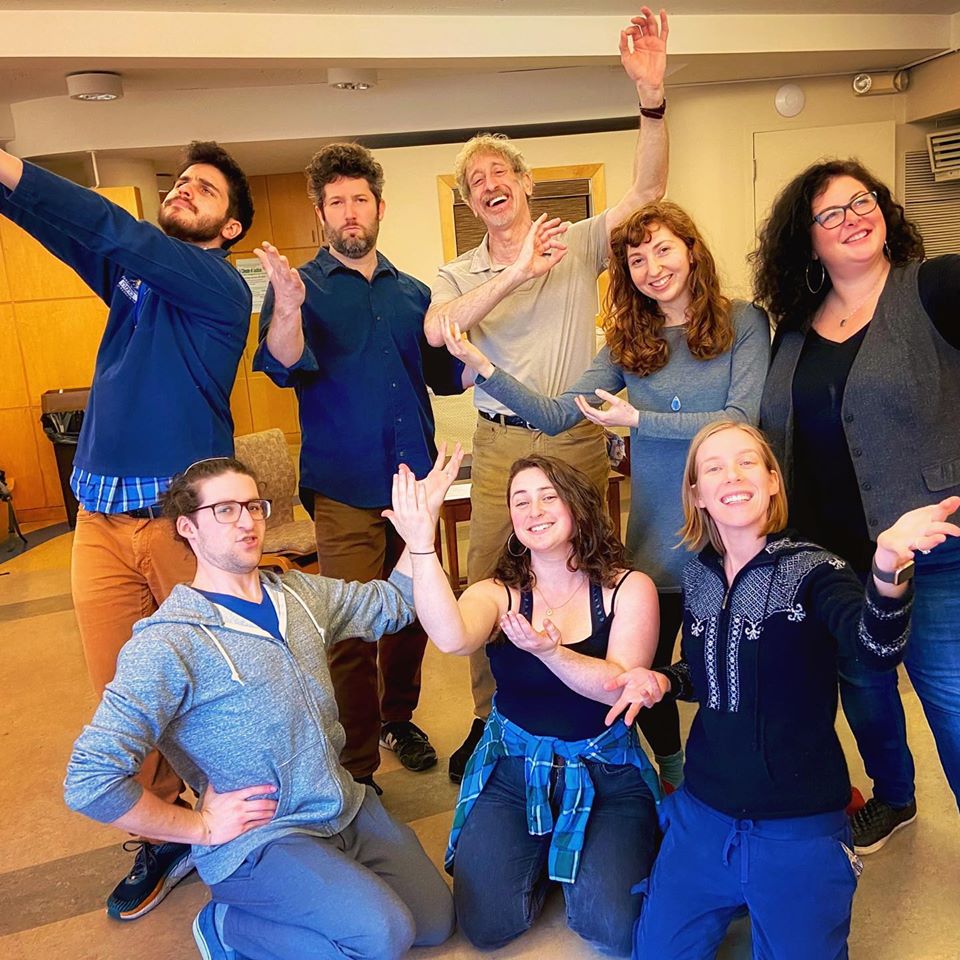I recently had the opportunity to present some of my techniques and philosophy for getting folks moving to the Rising Song Institute near where I live in Philadelphia. To quote their website, “Hadar’s Rising Song Institute cultivates Jewish spiritual life through song. It is a meeting place and incubator for creative musicians and prayer leaders who hope to reinvent the future of music as a communal Jewish spiritual practice”. Several of their leaders thought it would suit their purpose to be able to encourage movement while making music, and that led to my being invited. We had a wonderful and I believe for them, inspiring 2 hour workshop, which was cleverly scheduled for the first day of the month of Adar. And in those two hours, it was unanimously felt that “Joy increased” (the advent of Adar, the month with the holiday of Purim, is taken as a cue for joy to increase)
The workshop also prompted me to prepare this little aide memoire for the participants, which I think is worth sharing.
A WINDOW INTO MY PROCESS FOR MOVING COMMUNITIES:
The goals of a movement leader in a Jewish community context should be:
- Recognize the Jewish values embedded in dance: e.g. honoring by facing, making space for unified and individual expression (for instance, in synagogue there are congregational moments and also times when one or more take focus, as in during the dvar or during fine chazones), behaving in a cordial and civilized manner yet with exuberance
- Honor the concept of Hidur Mitzvah. I like to think of a mitzvah as an obligation and an opportunity. It is an obligation to dance, move, and celebrate in various contexts, and each presents unique opportunities to express that duty with flair and creativity.
- To instill trust, create success, and to connect the community with each other (a focus on Us, not Me)
Some principles to remember:
Begin with easy buy-in
This is the lovely seated dance, created by Ruth Goodman, I used to engage the group
Develop incrementally in small steps.
Don’t add or vary until everyone has gotten it
Be attuned to the comfort/boredom threshold (sparkling vs. dull eyes)
-things can go on longer than you think, but not indefinitely
Let each idea be aesthetically/ emotionally rewarding
This video from a First Night (New Year's Eve) party with Margot Leverett and her Klezmer Mountain Boys illustrates many of the prinicples- starting simply and adding elements incrementally, letting ideas propagate, and encouraging a sense of community. Note that at the very end we face and honor the wonderful musicians.
3 modes of movement: Seated, Standing, and Traveling
SEATED:
Gestures, but also weight changes (think of sitting bones as feet, like Mr. Potato Head)
Gestures can follow paths in space.
Body percussion to accompany song: Claps, foot stomps and articulations (toe tap, heel drop), hand pats (thighs, heart)
Rhythmic patterns often follow a path (down to up, out to in, side to side, etc)
Hands, fingers and arms can be articulate. Rhythm can be implied in movement.
STANDING:
An extension of seated ideas, now with legs and feet taking weight.
Can add levels and lateral movement.
Easier to make eye contact.
Liturgical movements can be adapted (rising, bowing, facing in different directions)
Individual expression (dancing) in place
TRAVELING:
Connected- holding hands or hands on shoulders
Following without physical connection
Possible paths for a group: Circling, Serpentines, Advancing and retreating
Single File, Two by Two, Flock
Facing is important- who are what are you facing as you move?
Here is a little video of advancing and retreating with Jewish gestures which should serve to illustrate some of the above ideas .
Greeting the arrival of Shabos in Krakow Poland by not turning our back on the imagined Sabbath Queen using a tradional backwards march and nigun that is now part of the culture at KlezKanada.
I hope these notes and illustrations prove useful and inspiring!

 RSS Feed
RSS Feed
